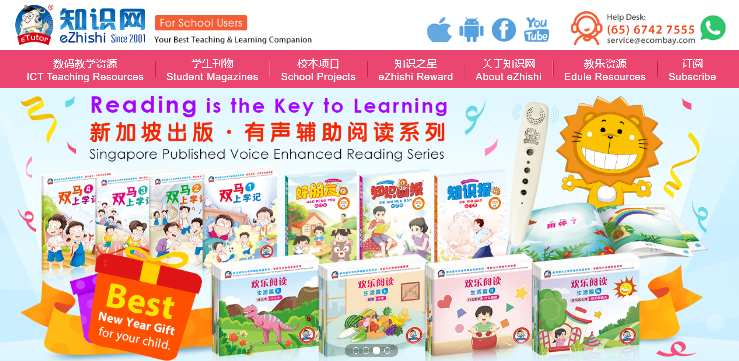Chinese Language
Chinese Language
Learning Outcomes
1. To furnish our students with the fundamental skills of listening, speaking,
reading and writing so as to enable them to be proficient users of Chinese
in everyday context.
2. To embed in students a lifelong interest in the Chinese Language and
culture.
Teaching Approaches
To strengthen our students’ mastery of the Chinese Language, we constantly employ a range of teaching and assessment strategies through ICT, Differentiated Instruction, Making Thinking Visible, Assessment for Learning and the 5W1H to deepen their learning experiences.
Department Programmes
Keeping the objective of stimulating and sustaining our students’ interest in learning Chinese in mind, the Chinese Language Department has also put in place a range of differentiated enrichment activities designed to expose our students culturally while promoting opportunities for meaningful interaction and collaboration with each individual.
1) Mother Tongue Fortnight
The objectives of MTL Fortnight activities are to provide platforms for students to actively learn MTL and the associated culture so as to experience MTL as ‘living languages’. Targeted cultural activities are arranged for each individual level so that students taking the Chinese Language will experience 6 different Chinese cultural activities at the end of Primary 6.
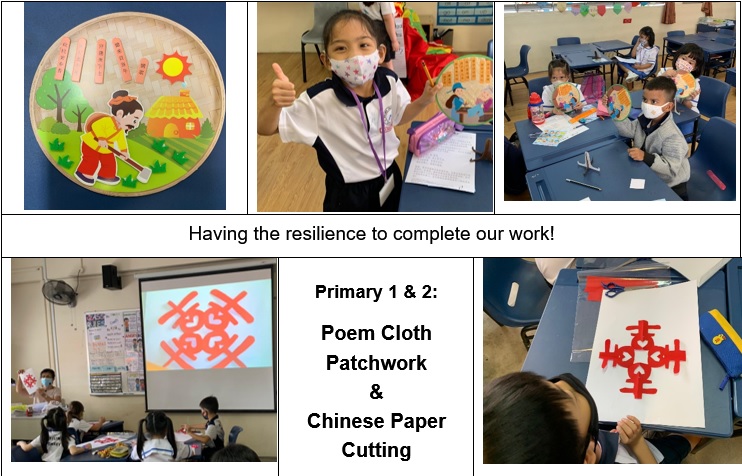
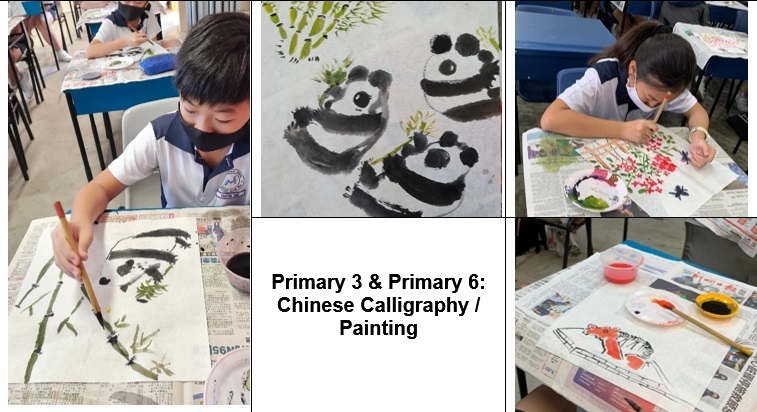
Primary 4 CL Cultural Camp Activities were suspended due to Covid-19
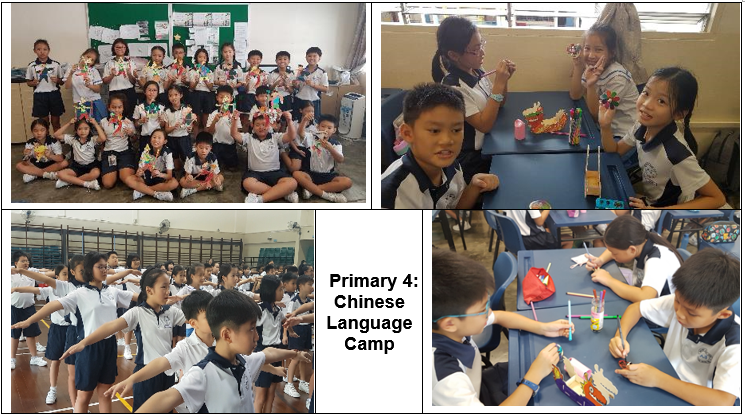

2) Talent Development
To help realize the potential of our students to their fullest, students are engaged in school competitions and various prominent Inter-school competitions to widen their exposure to the Chinese Language. (CL Literary Competition was suspended in 2020 due to Covid-19)
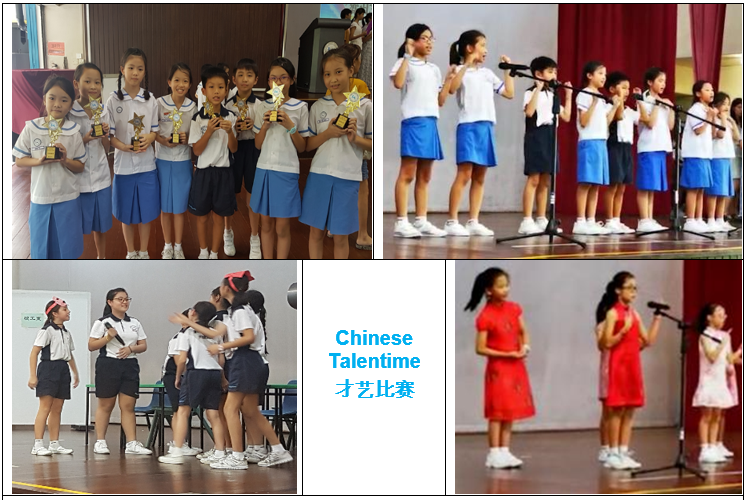
Chinese Talentime is a competition held once in a year. This platform allows students to promote the active usage of Chinese Language and to build their confidence in speaking. With guidance from teachers, students exhibit their talents through Poem Recital (for Lower Primary), Singing (for Mid Primary) and Role play (for Upper Primary).

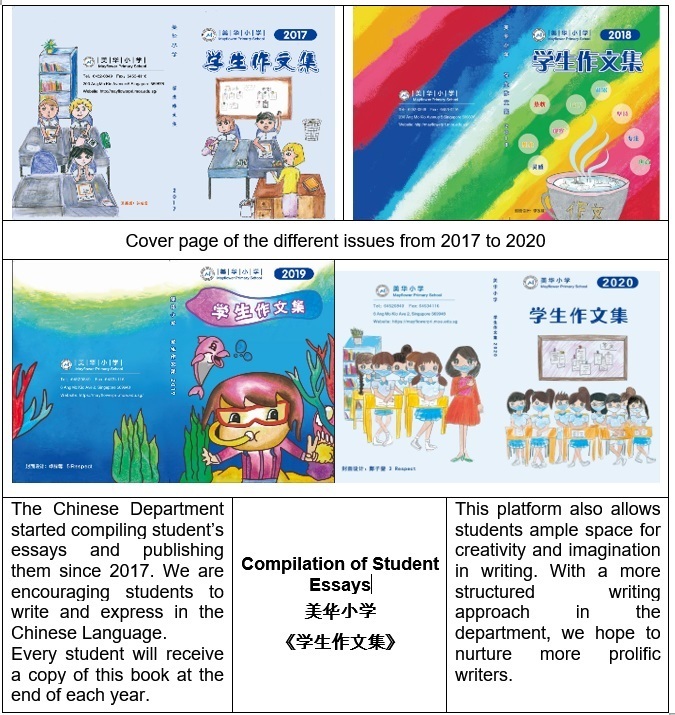

3) Learning Support
The modular Chinese Language curriculum structure caters to the unique needs and abilities of our students. To better support our students in learning, Primary 1 to Primary 4 students are regrouped after each academic year according to the 3 different modules, namely Bridging, Core and Higher Chinese.
In-class Support for Primary 1 and Primary 2 Bridging Module Classes
In-class support is provided by an AED to build students’ foundation for listening and speaking skills at lower primary for students who enter primary school with little or no knowledge of the Chinese Language.

Mother Tongue Support Programme for Primary 3 and Primary 4

This customised programme focuses on building a stronger foundation in students’ oracy and literacy skills, so that students can acquire key content and skills in a fun manner.

Learning Resources
Huanle Huoban Web Portal (Xue Le 学乐网)
Xuele has integrated inside SLS and will be available to all schools in Singapore only. https://vle.learning.moe.edu.sg/login
Huanle Huoban is a web portal hosting digital resources for the 2015 Primary School Chinese Language Curriculum. It focuses on the development of the various language skills (listening, speaking, interaction, reading and writing skills). These teaching and learning resources support student development and cater to students’ varied learning needs. The content is set in localised contexts, making it highly relevant to our students’ lives. There are also a series of activities such as language games, designed to reinforce students’ learning and to make learning fun and meaningful for students, both in and out of the classrooms.
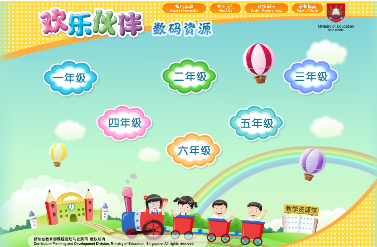
Ezhishi (Online version of 《新朋友》《新天地》《新列车》)
https://www.ezhishi.net/Contents/index.html
The learning magazine of 《新朋友》、《新天地》、《新列车》and eChinese Magazine is a comprehensive curriculum learning material in sync with the Singapore MOE syllabus, integrating curriculum, pedagogy and assessment to enhance Chinese learning. It integrates the traditional education model with advanced tablet technology, animation and e-learning functions.
Students have to pay a yearly subscription for the learning magazine and online learning portal.
